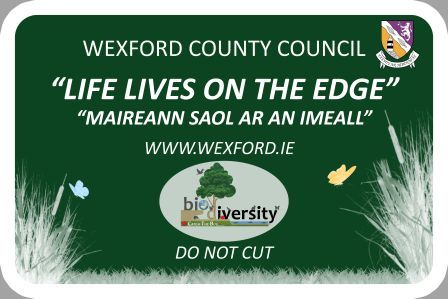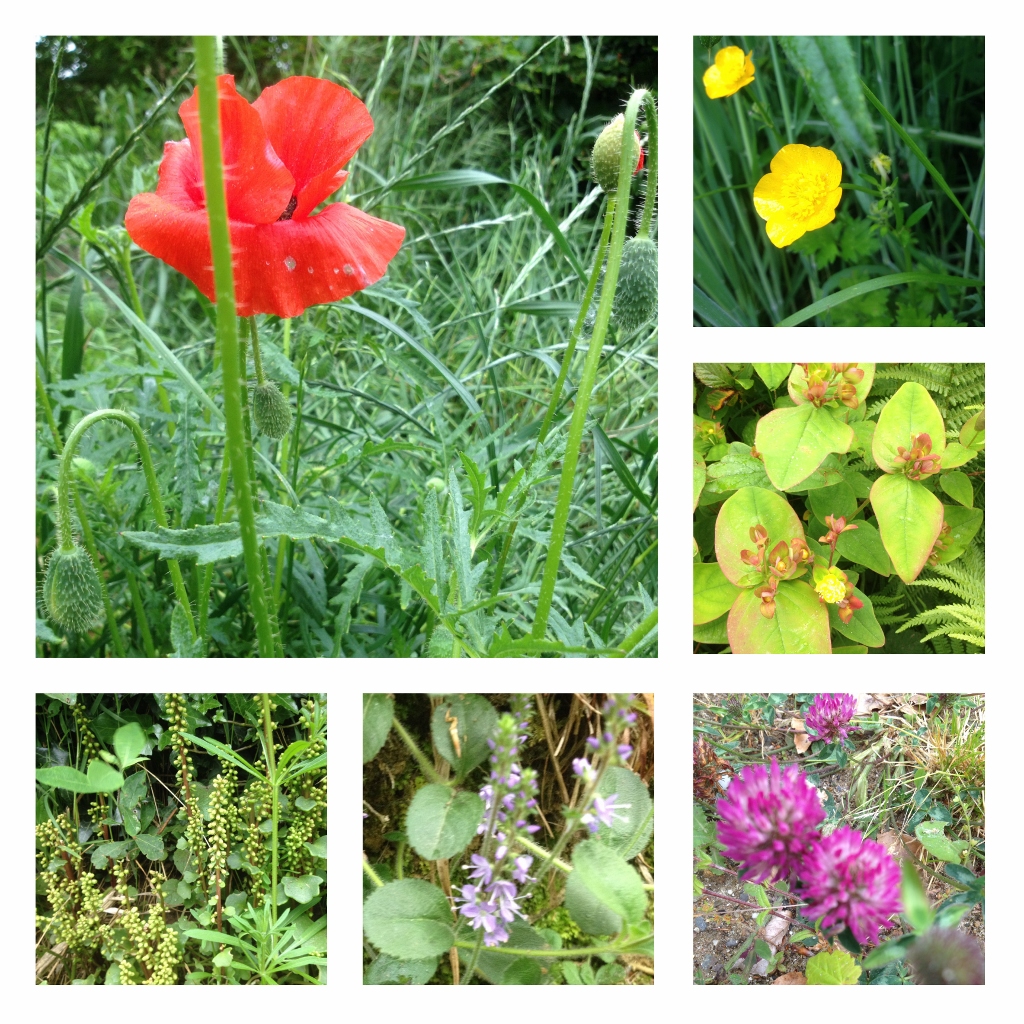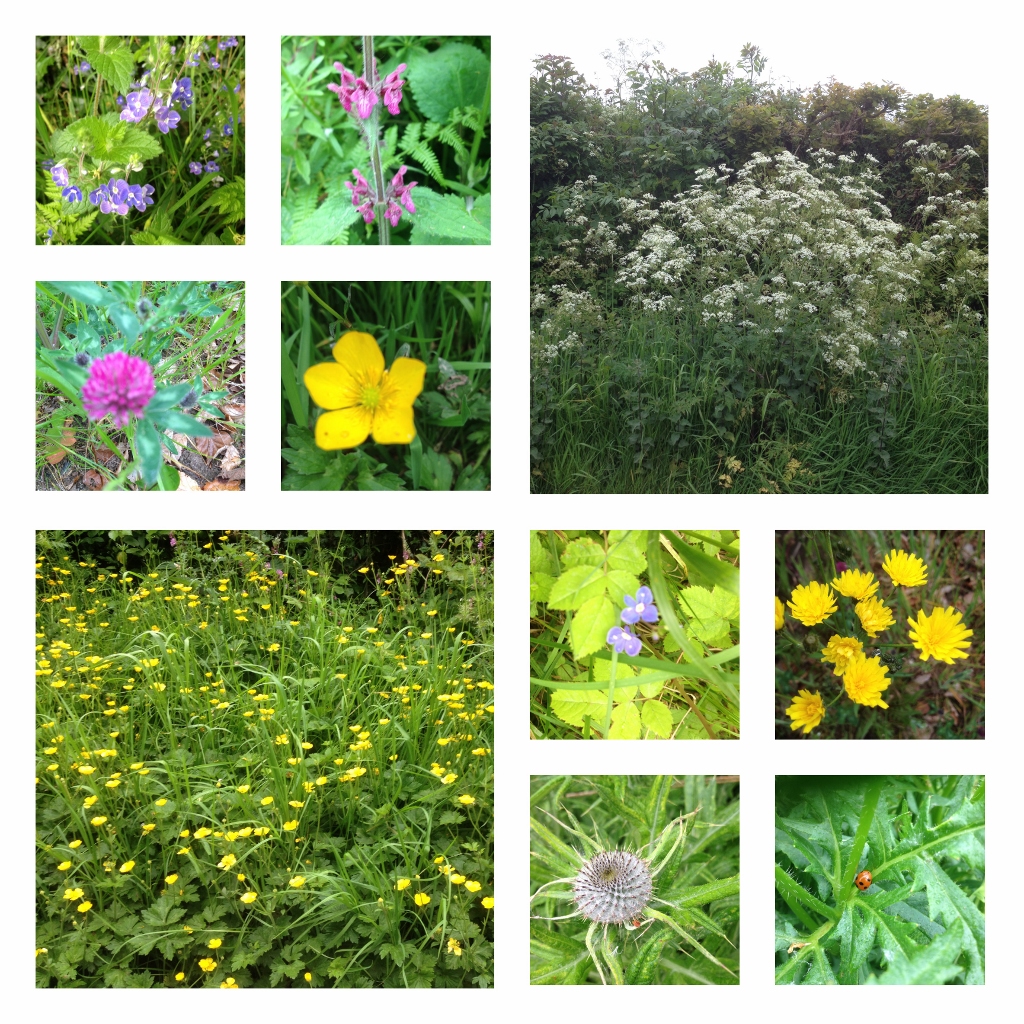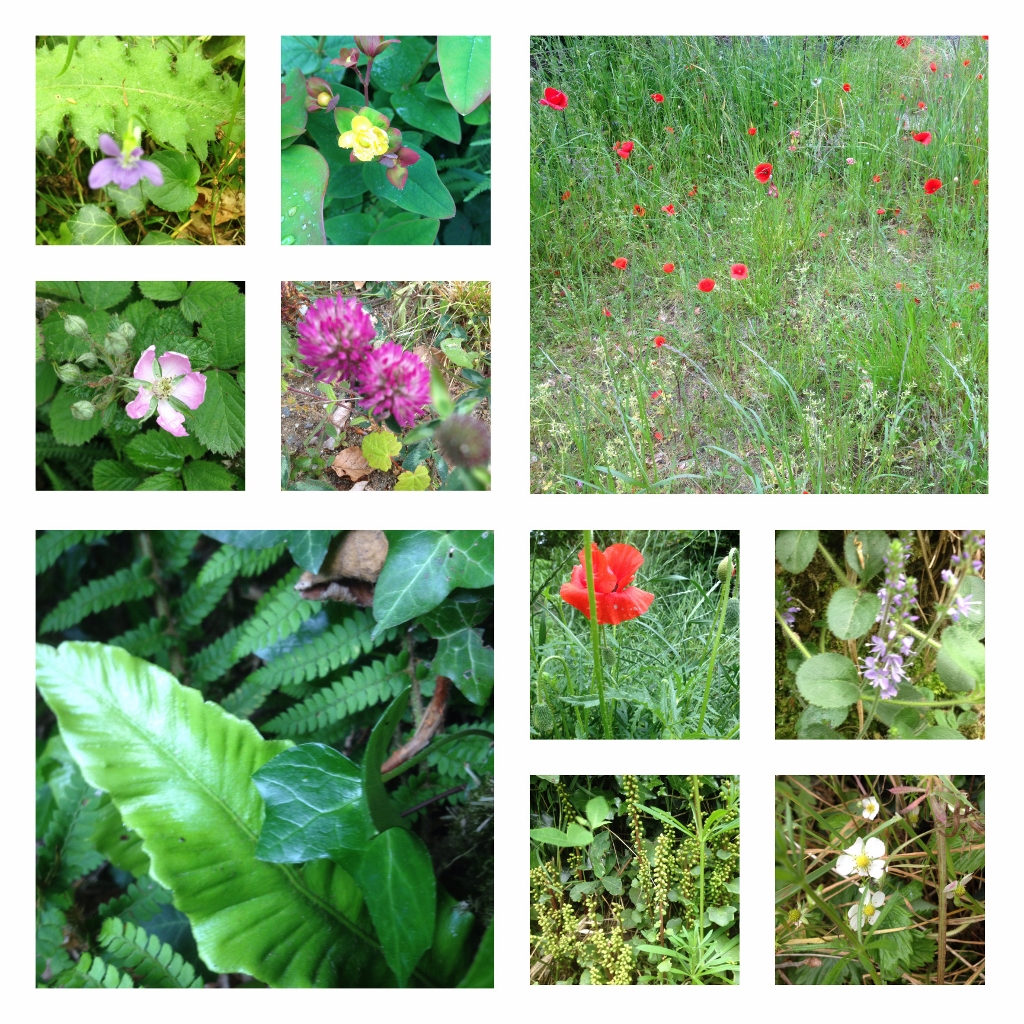‘Life Lives on the Edge’ – conservation of biodiversity
Last year Wexford County Council introduced a pilot project ‘Life Lives on the Edge’ in four locations throughout the county to increase wildflowers along the National roads. The plan is to encourage an increased biodiversity of flora and fauna along our roadways. This is the first project of its kind in Ireland. The overall aim of the project is to enhance or rediscover the range of visible biodiversity that potentially exists along Wexford roads. The designated areas vary in length and their boundaries will be defined by signposts at either end of the vegetated strips. These signposts will be recognisable by the projects slogan “Life Lives on the Edge”, which aims to highlight the importance of road verges and hedgerows as crucial wildlife corridors for Wexford’s flora and fauna.

In recent times, excessive concern with neatness on roadsides has led to development of verge management specifications that are not compatible with conservation of biodiversity, weed control or cost-effective vegetation management. This project is concentrated on maintaining the roadside vegetation at the four pilot sites thereby achieving biodiversity goals without neglecting safety or infrastructural maintenance objectives. These areas have been initially cut once in February/March and again in September. This should encourage the establishment of native wildflower abundance on the edge of our roads.

It’s not just the severe cutting back of roadside verges and hedgegrows that’s not compatable with the conservation of biodiversity. The use of herbicides to kill weeds and vegetation on road verges is also a huge problem that needs to be addressed. It removes seed producing plants important for many species, and destroys cover and travel corridors for wildlife. Bees, our most important food pollinators are in decline, so too are butterflies, birds and many insects and this is due directly to the over use of herbicides and pesticides.

Ireland has a diverse and astounding collection of wildflowers some of which are sadly now in decline. Our obsession with tidy landscaped gardens, roadside verges and not allowing wildflowers to grow and our overuse of herbicides and pesticides are a contributing factor for our wildflower decline. This in turn has a knock on affect on our native bees which are now in decline partly due to the loss of habitat and this poses risks for agricultural crops that depend on bees for pollination.

Pollinator habitats can attract domestic honeybees, but also wild bees and other wild beneficial insect species. These beneficial species include many different wasps, beetles, predatory mites, and more. These beneficial insects prey upon the kinds of insects that damage crops, so keeping them around can help reduce pesticide applications.

So what can we do to help conserve our biodiversity and increase our pollinator habitat?
- Extending the ‘Life Lives on the Edge’ project being piloted in Co. Wexford to all counties to help increase our pollinator habitats. One of the areas designated for this pilot scheme is quite near my home and since the pilot began there is a marked increase in wildflowers on that section of roadway.
- Plant native wildflowers in our gardens or leave a strip of un-mown grass to encourage wildflowers. Most Tidy Towns groups are doing this to help increase our pollinator habitat.
- Organic gardening can increase biodiversity. Over the last few years there has been an increase in the number of Community Gardens being set up and more and more homeowners are looking at growing their own. Successful organic gardens are diverse polycultures, supporting populations of pollinators, predators, and parasites that create a healthy and balanced garden community.
- If there is a need to use weedkillers there are organic alternatives available on the market.
- Aim toward the banning of harmful Glyphosate herbicides. The Dutch parliament are banning the sale of Glyphosate herbicides to private persons from the end of 2015. Why can’t we follow suit?

The selection of wildflowers in the photos were taken on a 1km stretch of road during the week. I’m sure if I had looked closer I would have spotted some more but these are the ones that caught my eye as I strolled along the road.
What are you doing to help conserve biodiversity and increase our pollinator habitats?







